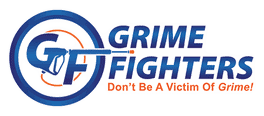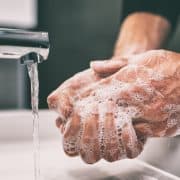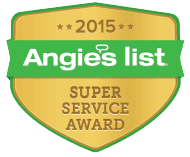Algae and Altruism
Learning manners from microorganisms.
Over the last two years we’ve learned a lot about bacteria, viruses, and the spread of germs. We’ve learned how the simplest of actions, washing one’s hands with soap and water, helps to reduce and prevent the spread of germs. Ironically, the same principle applies to keeping your home’s exterior clean and algae free.
Algae grows by photosynthesis. Algae have been referred to as “the most important photosynthesizing organisms on earth.” While there are various types of Algae, they share a common structure which is unique in that they do not have roots or leaves. Because of this unique structure, they occupy various habitats which would normally be inhospitable to plants, including porous rocks such as sandstone and limestone. But algae does not work alone. Forming a symbiotic partnership with Fungus, it forms Lichen, which behave as a plant-like growth. Both provide a beneficial environment for the other, including an exchange of oxygen, nutrients, and protection, allowing the symbiotic whole to become strong and resistant, able to grow and thrive where it could not do so alone.
Fungus lives by decomposing and absorbing the organic material in which they grow. Algae, on the other hand, is a chlorophyll containing aquatic organism. This symbiosis allows the organism to reproduce, withstanding extremes of weather and light, resulting in acid-producing lichens capable of disintegrating rock and damaging to zinc and lead used in flashing or gutters.
What does this mean for homeowners? Since a variety of microorganisms such as bacteria, fungi, viruses, protozoa, and algae are airborne, they can easily be spread from home to home. So just as proper handwashing can do much to prevent the spread of germs, viruses, and bacteria, so a PROFESSIONAL HOUSE WASH can protect your home from the spread of this insidious organism. While bacteria, fungi, and algae DO have an imperative function in our environment, they can also mean the slow destruction of your home. Just like disease, an ounce of prevention is worth a pound of cure.
Perhaps you have heard, or even repeated the adage, “Seeing is Believing”. The reality is that there are many environmental processes that occur which are unseen. However, we do see the effects. The symbiotic growth of algae and fungus may go unseen for a time, until it is all too evident. We’ve all seen a house or two, perhaps even in a row, smeared by the effects of the unseen.
So if your home is “sick”, your neighbour’s might be too. Why not take advantage of a special 15% DISCOUNT for a NEIGHBOUR REFERRAL HOUSEWASH. Partner with at least one neighbour to schedule a PROFESSIONAL HOUSE WASH to both receive the discount.







